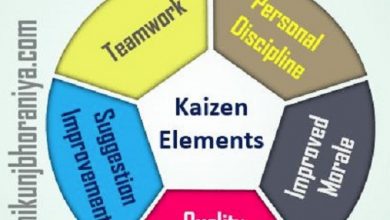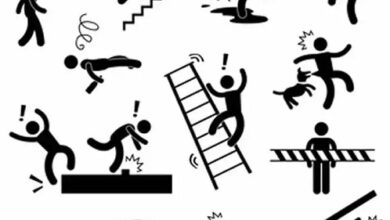What is Agile Marketing its origin benefits and implementation
What is Agile Marketing?
Agile Marketing is a method of task segmentation aiming at an optimized and collaborative result. It also contributes to improving interactions in the creation and operationalization team.
With so many nomenclatures and methods used in business, managers and their employees are often in doubt as to the contribution they offer. What are the benefits of Agile Marketing, for example?
The questions go further: do methods like this adapt to the other methodologies of my business or do I need to make them compatible with it? Do you also have these doubts and would you like to solve them, understanding what financial returns they can bring to your business?
They will help you understand the pillars of the methodology in marketing and, of course, its effects on the processes and actions developed by this area of your business.
Agile Marketing is more related to how a job is done than to the characteristics of the result itself. In short, a marketing team that works with the methodology and another that does not use this process can reach the same result. So why is he so acclaimed lately?
Agility in delivering results? Definitely, but it doesn’t stop there. Among the benefits of Agile Marketing, we can also list the optimization of the process, the improvement of interactions in the creation and operationalization team .
To bring all this to your business, Agile Marketing proposes to segment a marketing plan into several smaller steps and tasks. It uses, for this, a framework that allows you to customize the process like a jigsaw puzzle.
What are the most used agile methodologies in marketing?
Among the agile methodologies used in marketing, the most traditional and well-known are Scrum, Kanban and Lean .
1-scrum
The objective is to have maximum performance in all stages of production . For this, a backlog is created, or a set of solutions and items that a marketing action needs to offer.
The backlog is managed by the Product Owner, while the Scrum Master is the methodology mentor for the Scrum team working on a campaign . Each completed step is called a sprint, and within it can be a list of other backlogs.
2-Kanban
The idea of Kanban, which is perhaps one of the oldest among agile methodologies , is to create a simple visual flow . In it, tasks are categorized according to their status: pending, in progress, or completed.
With this information, it is possible to prioritize tasks, associate different professionals and marketing teams. For example, the one focused on social networks and the design one, which creates the pieces for promotion.
3-lean
The objectives of “lean manufacturing”, as the Lean methodology is known, are to reduce waste with time, company resources and investments made .
It is a combo of the first two methodologies, Scrum and Kanban, as it also uses visual flows and the intervention of mentors and product leaders to ensure the effectiveness of the agile model and the allocation of resources.
How did the Agile Marketing model come about?
Agile Marketing is based on the methodology of the same name, used for the development of software and technologies. Its origin, therefore, is directly linked to the engineering and information technology sectors, as is the case of Kanban, the result of the Japanese organizational model of the manufacturer Toyota.
The Agile methodology seeks to standardize a process, through the segmentation of its steps . This ensures that it can be customized for each demand and, even so, obeying a logic known to all its employees.
For this, there are methodologies and guidelines that allow professionals involved in a project to interact in a productive and efficient manner . Thus, it streamlines the workflow and also considerably increases your chances of success.
The Agile methodology was further strengthened when a group of developers came together to discuss and determine its principles. This meeting generated what is called the Manifesto for Agile Software Development , and its foundations are:
- it is necessary to find answers to changes in the project, rather than following the plan originally outlined, showing that the process will generate information and learning that must be used to improve the final result;
- people, their experiences, knowledge and interactions are more relevant than the processes and tools used;
- a functional outcome (in this case, the working software) is more important than comprehensive documentation;
- collaboration with the customer or end user is above contract negotiation.
Thus, following these premises, projects and developments, whether of new technologies or marketing campaigns, will be considered agile. Do you realize that in all the fundamentals there is an emphasis on the flexibility of interactions, the privilege of knowledge and human relationships ?
These are very important characteristics for marketing, which justifies their adaptability to the methodology, don’t you think? But what can we list as business benefits?
After all, in theory, a marketing team could achieve the same results using traditional methods, right? Let’s see!
How can Agile Marketing facilitate your processes?
Among the benefits of Agile Marketing, we can highlight those that are easily perceived in business management and that unfold from the principles of the Agile methodology.
1-Ongoing customer and target audience satisfaction
Customer satisfaction or the target audience of a campaign is not the end goal, but part of the journey to the end of the project .
Thus, all steps and actions are developed with the objective of meeting the needs of the public and use the same databases, such as the definition of the product persona , to customize the execution of their tasks and sprints of the Scrum model.
2-Improved interaction between marketing teams
When a large project is divided into several tasks, the professionals involved in each of them need to interact more regularly . Initial and periodic meetings are held so that everyone can inform the progress of their steps, exchange ideas on improvements by brainstorming and propose new solutions to optimize the result.
3-Increased ability to customize projects
After creating a process with different steps and a list of backlogs for each one, it is possible to stipulate which of them are essential for a project or not.
In other words, like a puzzle, it is possible to quickly assemble a new project and involve the professionals necessary for its execution . This versatility boosts project performance.
4-Constant growth
One of the benefits of Agile Marketing is that it is geared towards analyzing performance data in real time . This means that as marketing projects are put into practice, their results are evaluated and corrected for maximum success.
This is a learning that, of course, is used for subsequent projects, as all data and variables are cataloged according to the return of the target audience. If companies know how to do better, constant growth is a result of the process.
How to implement Agile Marketing in your business?
To implement Agile Marketing in your business, it is necessary to map the current processes, products, services and sectors involved in the different stages of production and customer relations. This information will allow you to organize frameworks and ensure their efficiency.
1-Create a framework for the Agile Marketing of the business
To create a framework, or Agile model for your business, you need to consider:
- define the business strategy, how to reinforce the differentials that need to be transmitted in its services;
- launch a minimum viable model that will allow audience insights to be used to customize the final marketing product;
- work on improvements based on results and data analysis;
- use the “plan, build, learn and progress” scheme.
This agile learning scheme considers planning what you want to achieve in each sprint: building a basic model with the information already collected, learning from the results and progressing, cataloging the performance and looking with the team for ways to improve the idea.
2-Promote the Agile culture in the company
In addition to creating the framework, it is necessary to make employees embrace the methodology. It requires dedication, commitment to deadlines, openness to interacting with other employees and, of course, an innovative vision to propose new solutions when necessary .
As the business will need to decide on a methodology to base its Agile model, a good practice may be to involve employees in this process. Demonstrate the advantages that each agile solution can offer and make them feel part of the decision.
Courses for self-organization, adaptation of this model to the remote work scheme , among other management details, can also be important.
3-Choose Scrum Masters and Other Model Mentors
A Scrum master who is responsible for the success of the methodology in marketing processes is essential. Even if another agile model is adopted, a mentor who guides the team and shows the benefits of its use contributes to everyone’s adherence and engagement .
It is good to remember that, as Agile Marketing focuses on the process, the use of performance indicators (KPIs) is essential in the strategy. They will be used in planning, monitoring execution and analyzing results.




